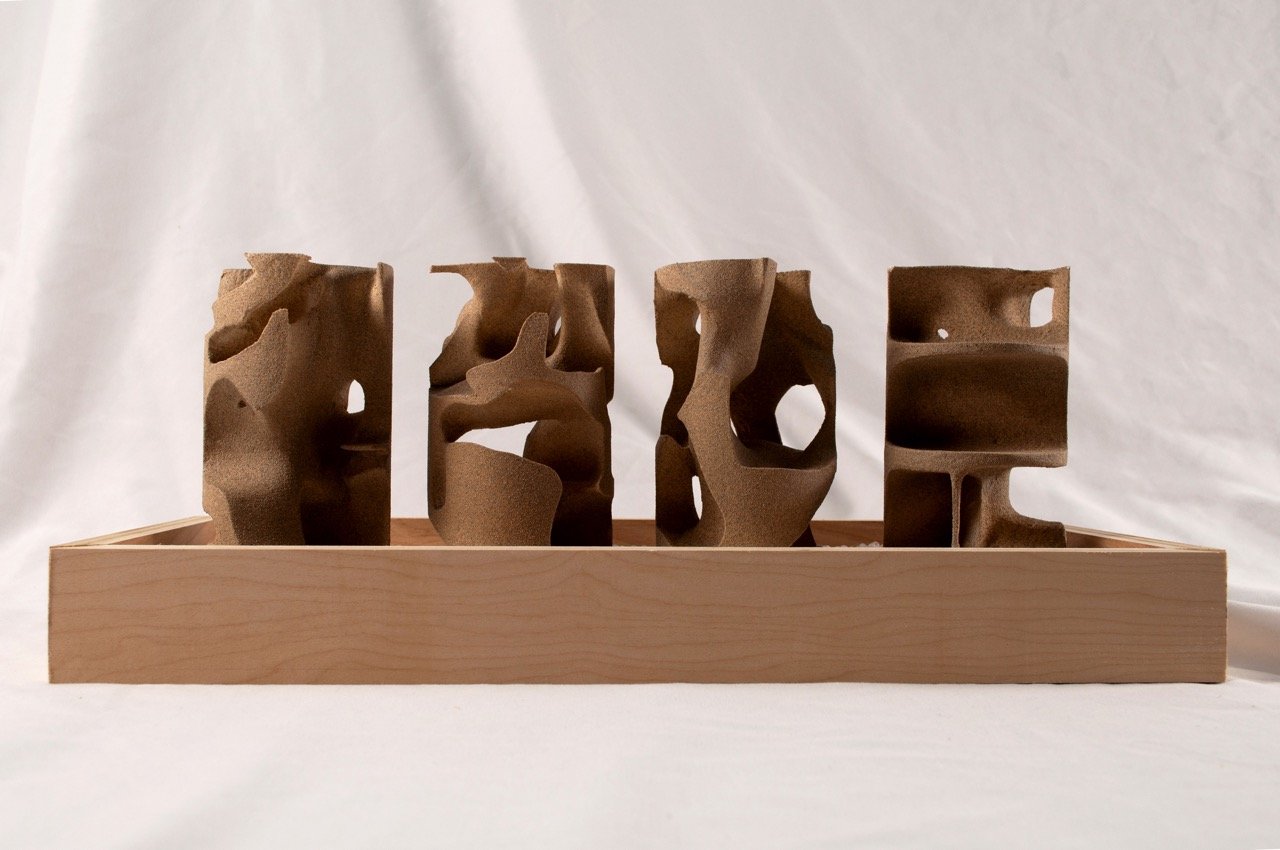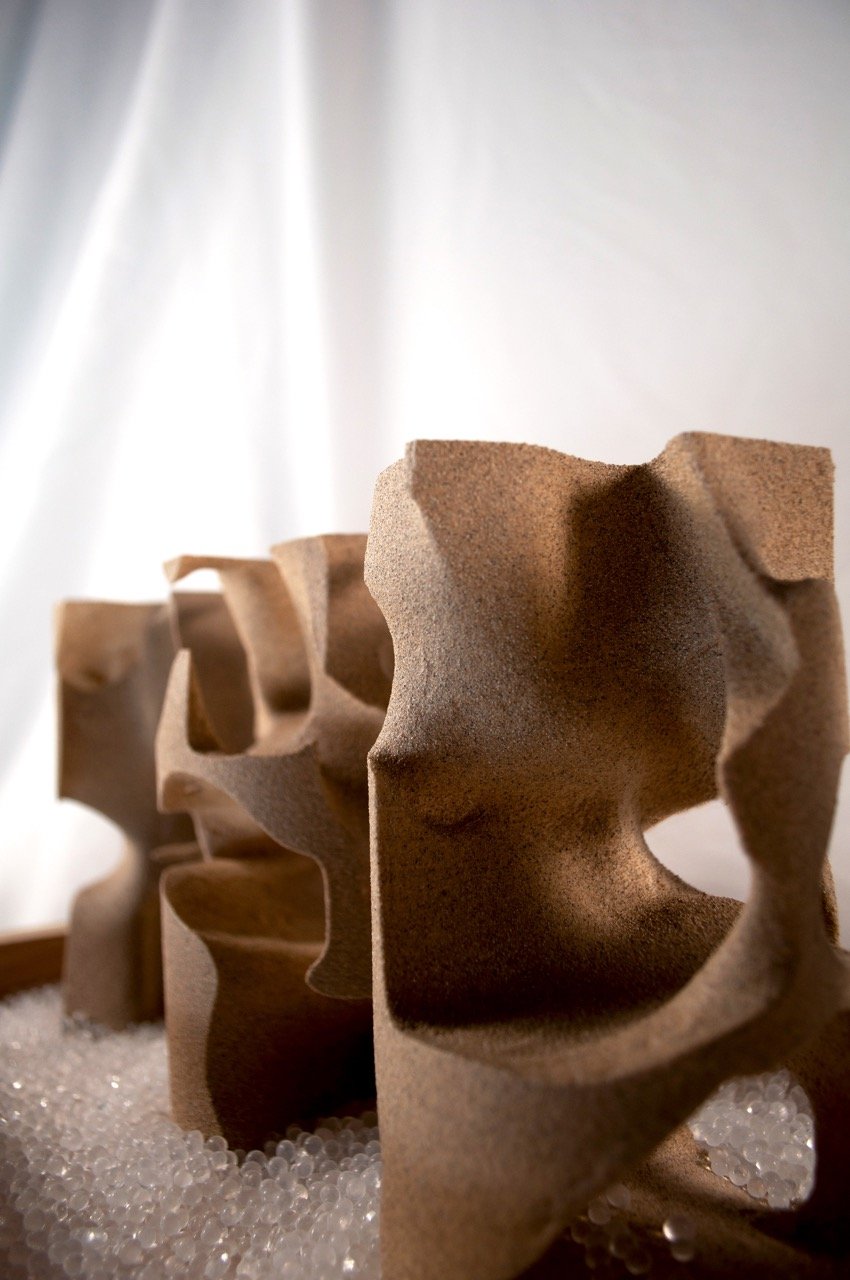Carlos Cepeda Gomez’s “Domestic Spaces of Ecological Anxiety: Models of Speculative Architecture” - 2025 Winner


Carlos Cepeda Gomez’s “Domestic Spaces of Ecological Anxiety: Models of Speculative Architecture”
Sculpture & Mixed Media: 3D Printed PLA treated with spackle and primer, coated with textured desert bisque spray paint; Silica balls on a wooden container
Miami, FL
Under our capitalistic framework of unrestrained growth, our architecture of carbon-producing machines, water-polluting materials, and energy-intensive climate control, has expelled nature from our spaces whilst exacerbating our role in climate change. The Global North, particularly, must rethink its increasing trends of hermeticism—environmental and beyond. These four models—resembling soil core tests—are spaces within a proposed research institution in the American Arid Lands dedicated to preserving and living with nature. As a speculative exploration, these models reconceptualize what residential spaces could look like in an era of climate anxiety. Blurring the thresholds of inside and outside, public and private, and floor to floor, this proposal deconstructs architectural conventions, creating spaces of environmental interaction, communal sharing, and adaption to the water’s cycles and vertical flux. This project, then, radically positions the environment, people, and water as equal stakeholders in placemaking. Reflecting the Texas Panhandle’s strife between water and soil, this exploration responds to the environmental factors afflicting Lake Meredith—a human-made reservoir. Intersecting lax water regulations, desertification efforts, water-intensive farming practices, and the multi-dimensional effects of climate change, the lake is an ideal site to imagine novel relationships between architecture and the environment. Rather than spaces that shield us from nature, this project reconceptualizes architecture as an extension of the environment. The cavernous surfaces of the PLA models mirror water erosion as represented by the silica balls at the base. “Domestic Spaces of Ecological Anxiety” is not only a commentary on our necessity to re-embrace nature, but as an exploration of how we can work to democratize architectural processes for equitable, healthy, and just placemaking.
